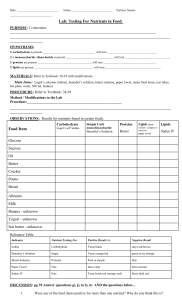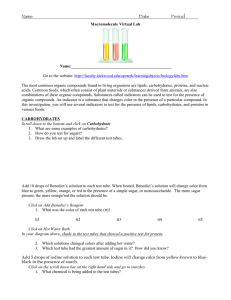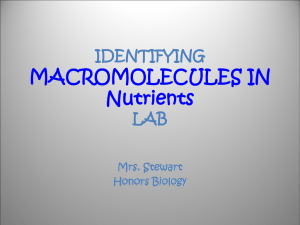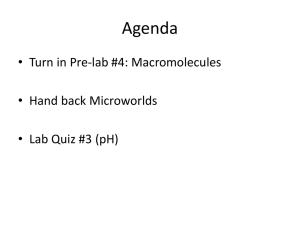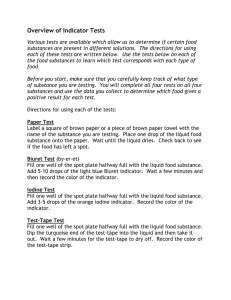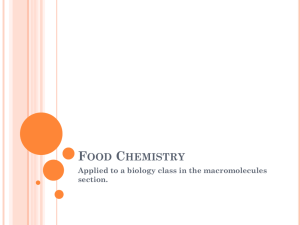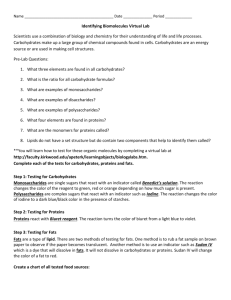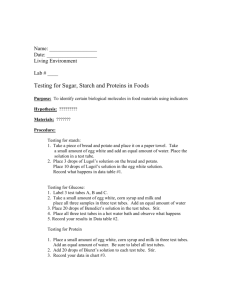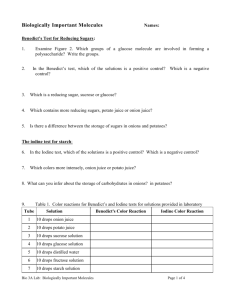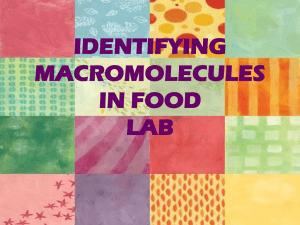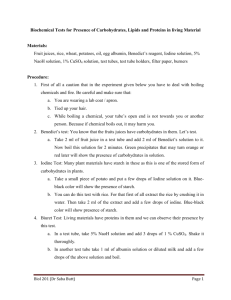Identifying Organic Compounds Introduction
advertisement
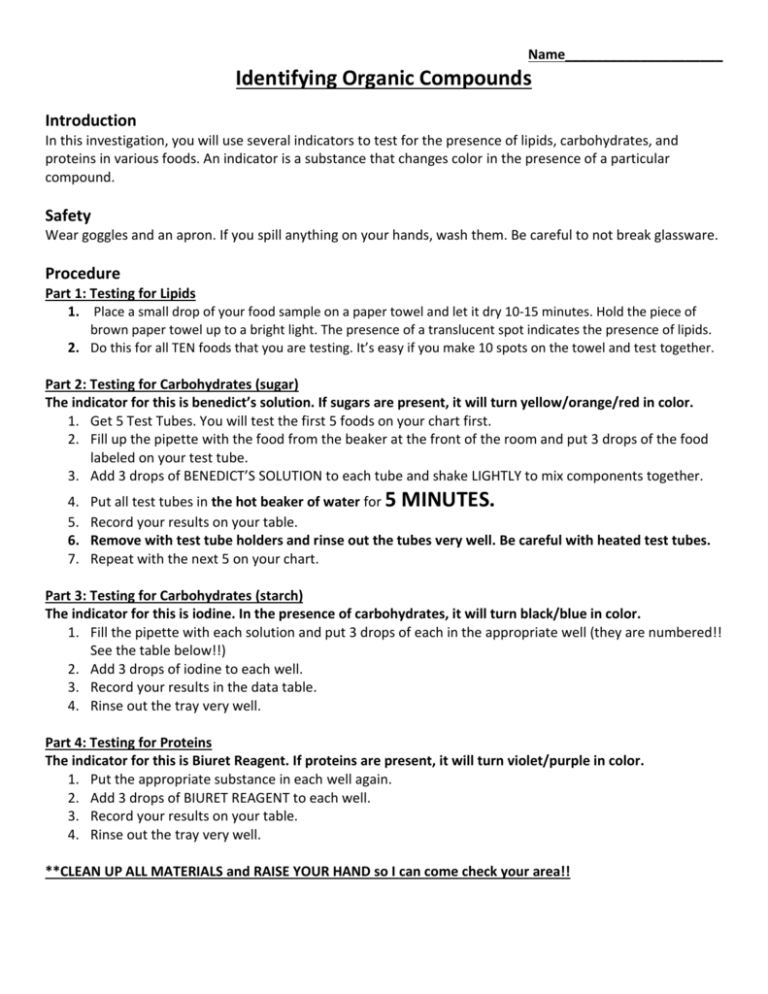
Name_____________________ Identifying Organic Compounds Introduction In this investigation, you will use several indicators to test for the presence of lipids, carbohydrates, and proteins in various foods. An indicator is a substance that changes color in the presence of a particular compound. Safety Wear goggles and an apron. If you spill anything on your hands, wash them. Be careful to not break glassware. Procedure Part 1: Testing for Lipids 1. Place a small drop of your food sample on a paper towel and let it dry 10-15 minutes. Hold the piece of brown paper towel up to a bright light. The presence of a translucent spot indicates the presence of lipids. 2. Do this for all TEN foods that you are testing. It’s easy if you make 10 spots on the towel and test together. Part 2: Testing for Carbohydrates (sugar) The indicator for this is benedict’s solution. If sugars are present, it will turn yellow/orange/red in color. 1. Get 5 Test Tubes. You will test the first 5 foods on your chart first. 2. Fill up the pipette with the food from the beaker at the front of the room and put 3 drops of the food labeled on your test tube. 3. Add 3 drops of BENEDICT’S SOLUTION to each tube and shake LIGHTLY to mix components together. 4. 5. 6. 7. Put all test tubes in the hot beaker of water for 5 MINUTES. Record your results on your table. Remove with test tube holders and rinse out the tubes very well. Be careful with heated test tubes. Repeat with the next 5 on your chart. Part 3: Testing for Carbohydrates (starch) The indicator for this is iodine. In the presence of carbohydrates, it will turn black/blue in color. 1. Fill the pipette with each solution and put 3 drops of each in the appropriate well (they are numbered!! See the table below!!) 2. Add 3 drops of iodine to each well. 3. Record your results in the data table. 4. Rinse out the tray very well. Part 4: Testing for Proteins The indicator for this is Biuret Reagent. If proteins are present, it will turn violet/purple in color. 1. Put the appropriate substance in each well again. 2. Add 3 drops of BIURET REAGENT to each well. 3. Record your results on your table. 4. Rinse out the tray very well. **CLEAN UP ALL MATERIALS and RAISE YOUR HAND so I can come check your area!! Identifying Macromolecules Lab Pre-Lab Discussion 1. What is an indicator? __________________________________________________________________ 2. What is the purpose of using just water in one of your test tubes? ______________________________ ___________________________________________________________________________________ 3. What is the purpose of washing the trays thoroughly after each test? ___________________________ ____________________________________________________________________________________ Results Lipid Test Substance Are lipids present? Carbohydrate Test Benedict’s Color Are sugars present? Iodine’s Color Protein Test Are starches present? Biuret Color Are there proteins present? 1. Honey 2. Egg white 3. Corn oil 4. Letuce 5. Milk 6. Peanut Butter 7. Potato 8. Apple Juice 9. Water 10. Unknown Conclusion 1. Which substances contain lipids? ________________________________________________________ 2. Which substances contain starch? ________________________________________________________ 3. Which substances contain simple sugar? __________________________________________________ 4. Which substances contain protein? _______________________________________________________ 5. Which substance did not test positive for anything? _________________________________________ 6. People with diabetes are instructed to avoid foods that are rich in carbohydrates. How could your observations in this investigation help you decide whether a food should be served to a person with diabetes? ___________________________________________________________________________

